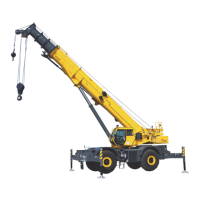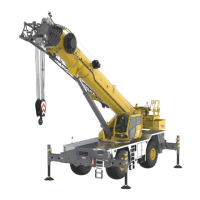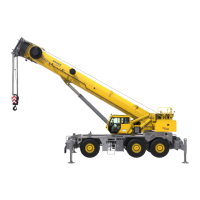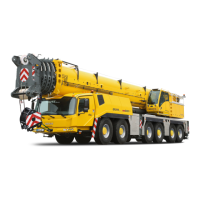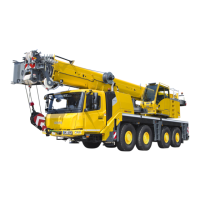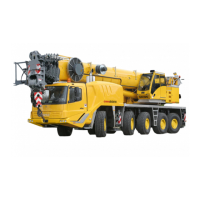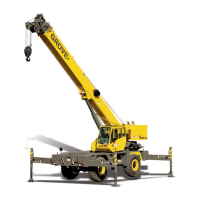5-8
Published 10/19/2017, Control # 618-00
HOIST AND COUNTERWEIGHT GRT880 SERVICE MANUAL
Prepare hoist by cleaning drain area and to obtain an
uncontaminated sample. Operate hoist in both directions for
one or two minutes to thoroughly mix the gear oil. Take
sample from midstream flow of oil to obtain an accurate
representation of the oil condition. After taking the oil sample,
continue with oil change or refill hoist gear cavity to proper
level with recommended lubricant.
General Guidelines for Iron Contaminant
Level
100-500 ppm
Normal
500-800 ppm
Caution - Abnormal Sample. Change oil and retake sample
after 50 hours of operation. If second sample is above 500
ppm, remove hoist from service and perform tear-down
inspection to determine source of contamination.
800+ ppm
Unacceptable. Remove hoist from service and perform tear-
down inspection to determine source of contamination.
NOTE: Iron contaminant levels will be on high side of
“Normal' during initial break-in.
Equally important as level of contamination is a change in
level of contamination. An effective oil analysis program
should provide the technician with a view of the progression
of wear or a trend. If a sample shows a sudden rise in
contaminant level action should be taken to determine what
has changed.
NOTE: Oil analysis alone cannot detect nor warn against a
fatigue failure.
Brake Test Procedure
These planetary hoists have a spring applied, hydraulically
released, multiple disc brake inside the hoist housing. This
brake holds a suspended load when the directional control
valve is in neutral, or when hydraulic power is lost. A load
cannot be lifted or lowered, however, without applying
hydraulic pressure to the release port and releasing the
brake.
(Test to be performed with no load on the hoist)
Remove and cap or plug the brake release line from fitting in
the hoist brake release port.
With hydraulic power unit running, move directional control
valve handle slowly to the full open, lowering position.
Increase the engine speed, if necessary, to bring system
pressure up to the relief valve setting. The hoist drum should
remain stationary.
If the hoist drum rotates, the hoist should be disassembled
and the brake components should be examined for wear. In
addition, the brake springs should be measured for the
correct free length in those hoist using helical compression
springs.
Replace any parts showing excessive wear and any spring
whose length is shorter than the minimum shown in the
applicable hoist Service Manual.
Reassemble the brake and hoist and repeat the above steps.
When testing is complete, reattach the brake release line to
the brake release port.
MOTOR, MOTOR CONTROL VALVE, AND
BRAKE
Description
Each hoist has a hydraulic motor, a motor control valve, a
brake cylinder, and a brake clutch which controls motion of
the hoist’s drum. These parts mount on or in the gearbox.
The hydraulic motor connects to the hoist’s brake, which in
turn connects to the gear train of the hoist. The entire hoist
assembly must be removed from the crane to service the
brake cylinder and clutch.
Removal
1. Power-wash the hoist on the motor side to wash away
potential contaminants from the drive components of the
hoist.
2. Drain the oil from the hoist gearbox. Refer to the hoist
draining procedures on page page 9-27. Once oil is
drained, reinstall the plug or hose at bottom of sight
glass.
3. Tag and disconnect the hydraulic lines from the motor
and the motor control valve. Cap or plug all lines and
openings.
4. Remove the bolts and washers to free the motor and
motor control valve from the brake cylinder and brake
clutch, which are in the motor control valve gearbox.
Remove the motor and motor control valve as a unit.
Discard the O-ring.
5. Cover the motor opening in the brake cylinder to protect
drive components inside the hoist drum. As needed,
secure the brake clutch from inside the brake cylinder.
CAUTION
Hot oil may cause personal injury and/or burns to
unprotected skin. Make certain the oil has cooled to a safe
temperature (typically less than 110°F or 43°C) before
taking an oil sample, changing oil or servicing the hoist.
Reference Only

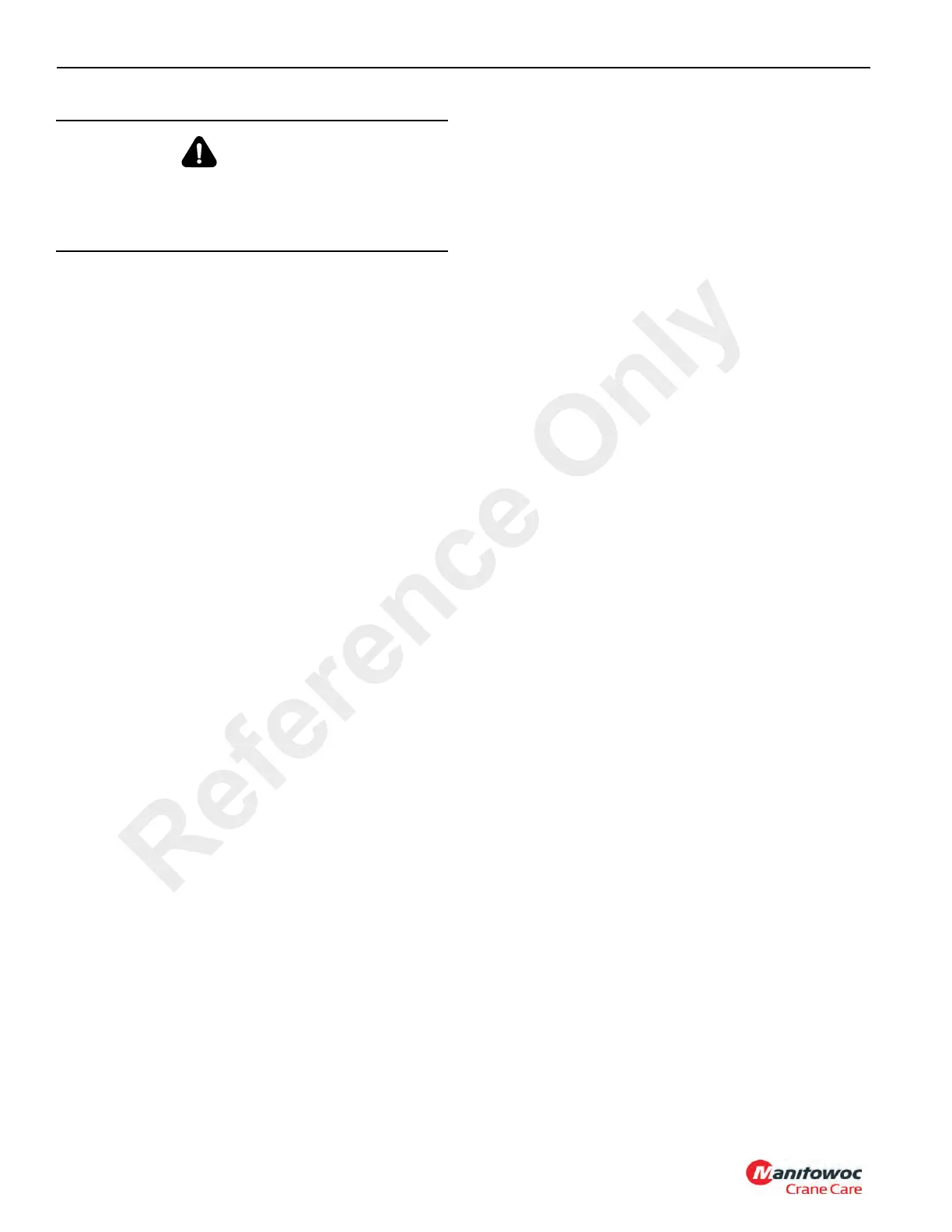